Table of contents
- Can apps scam you
- Which app is used for scamming
- Can apps from official sources be a scam
- How do scam apps work
- How dangerous scam apps are
- How to identify scam apps
- Check the developer
- Read reviews and ratings
- Search for the app on social media
- Analyze app permissions
- Check the version history
- Use security software
- How do you report scam apps
- Report scam apps on iPhone
- Report scam apps on Android
- What else can you do?
- Conclusion
Can apps scam you
Yes—there are apps that can scam you. These apps may seem trustworthy, but they do all sorts of malicious things, like stealing sensitive information, showing intrusive ads, or tricking you into hefty subscriptions. Despite what many people believe, fake apps are not limited to third-party storefronts—you can also find them on the Apple App Store and the Google Play Store.
A security solution like Clario Anti Spy can help if you're concerned about having fake apps or your phone.
Here's how to check for scam apps with Clario Anti Spy:
- Install Clario Anti Spy and subscribe to set up an account.
- Tap Scan under Device system check.
- Read the scan report and follow the onscreen prompts to secure your mobile device.

Clario Anti Spy comes with additional features that enhance your device's security, such as a jailbreak detector, a real-time data breach monitor, and 24/7 access to security experts.
Which app is used for scamming
Bad actors can develop scam apps for just about anything. For instance, there are fake shopping apps, cryptocurrency wallets, productivity tools, antivirus utilities, video games—the list goes on. However, these apps can be grouped by type based on their behavior.
Common types of scam apps used by fraudsters include:
- Phishing apps: Mimics legitimate services to trick users into providing highly sensitive information, like passwords and credit card numbers.
- Fleeceware: Offers free trials and charges exorbitant subscription fees once the trial period ends. These apps can also deceive users into paying for simple features that are freely available natively or elsewhere.
- Scareware: Uses fear-mongering and social engineering tactics, such as fake virus alerts, to coerce users to purchase unnecessary software or services.
- Adware: Bombards users with intrusive ads that lead to malicious sites looking to phish for personal information.
- Fake utilities: Uses false advertising, such as claims of optimizing device performance, to exploit the phone's permissions system to collect data.
Note:
Fraudsters can also use fake apps to manipulate users into downloading spyware. Learn more about how to find hidden spy apps on Android or go through our list of apps that spy on the iPhone.
Can apps from official sources be a scam
While Apple and Google have strict review processes for their app stores, fake apps still slip through. Developers can hide harmful code in ways that are hard to detect, or they may initially release harmless versions to get approval and later push updates that make the apps act maliciously.
Some sketchy apps also manage to stick around for a long time despite bothering users with ads or permission requests. These apps walk a fine line without technically violating store policies.
How do scam apps work
Fake apps appear legitimate to trick you into downloading them. Once installed, they may request excessive permissions, display intrusive ads, or deceive you into making purchases. They can also phish for personal information or install additional malware.
Here’s how apps used by fraudsters operate:
- Disguises as legitimate apps: These apps copy the branding and style of legitimate apps, infiltrate official app stores, and fake user ratings to deceive users.
- Requests excessive permissions: Prompts the user for access to various data sources and device functionalities—contact info, messages, location services, etc.—despite not needing them to work correctly.
- Phishes for personal information: Creates fake login screens and forms to capture passwords, contact details, and credit card information.
- Displays intrusive ads: Displays ads that are difficult to close.
- Pushes subscriptions: Engages in sneaky tactics like enrolling users into expensive or recurring subscriptions.
- Installs additional malware: Infects the phone with other malicious apps that continue to jeopardize its security.
How dangerous scam apps are
Scam apps pose significant risks because they can steal personal information, financial details, and even take control of your device. The consequences include financial loss, identity theft, compromised device security, and psychological trauma.
Here's why apps used for scamming are dangerous:
- Financial loss: Fake apps can subscribe you to fake services or make unauthorized purchases. Recovering these funds can be complicated and time-consuming.
- Identity theft: These apps often steal login credentials and social security numbers that fraudsters use to open credit accounts or loans in your name.
- Compromised device security: Fake apps can create backdoors for hackers and other malicious software.
- Psychological trauma: Falling victim to a scam can result in stress, anxiety, and paranoia.
How to identify scam apps
It's crucial to ensure that what you download onto your phone is safe and legitimate. Before installing any app, especially an e-commerce one, it’s wise to check its legitimacy—many users ask if Temu is a scam to verify whether an app is trustworthy. Verifying developer information, reading reviews and ratings, and analyzing app permissions can help you spot fraudulent apps before they do serious damage.
Check the developer
The easiest way to tell a fake app from a real app is to check the developer's name. If it's different from what you'd expect or contains misspellings or typos, it’s likely a fake.
Here's how to find the developer of an app on an iPhone or Android:
- Open the App Store or Play Store and head over to the store page of an app.
- You should see the developer listed under the app's name and in several places within the rest of the page.
- Perform a cursory search for the developer online if you're uncertain.
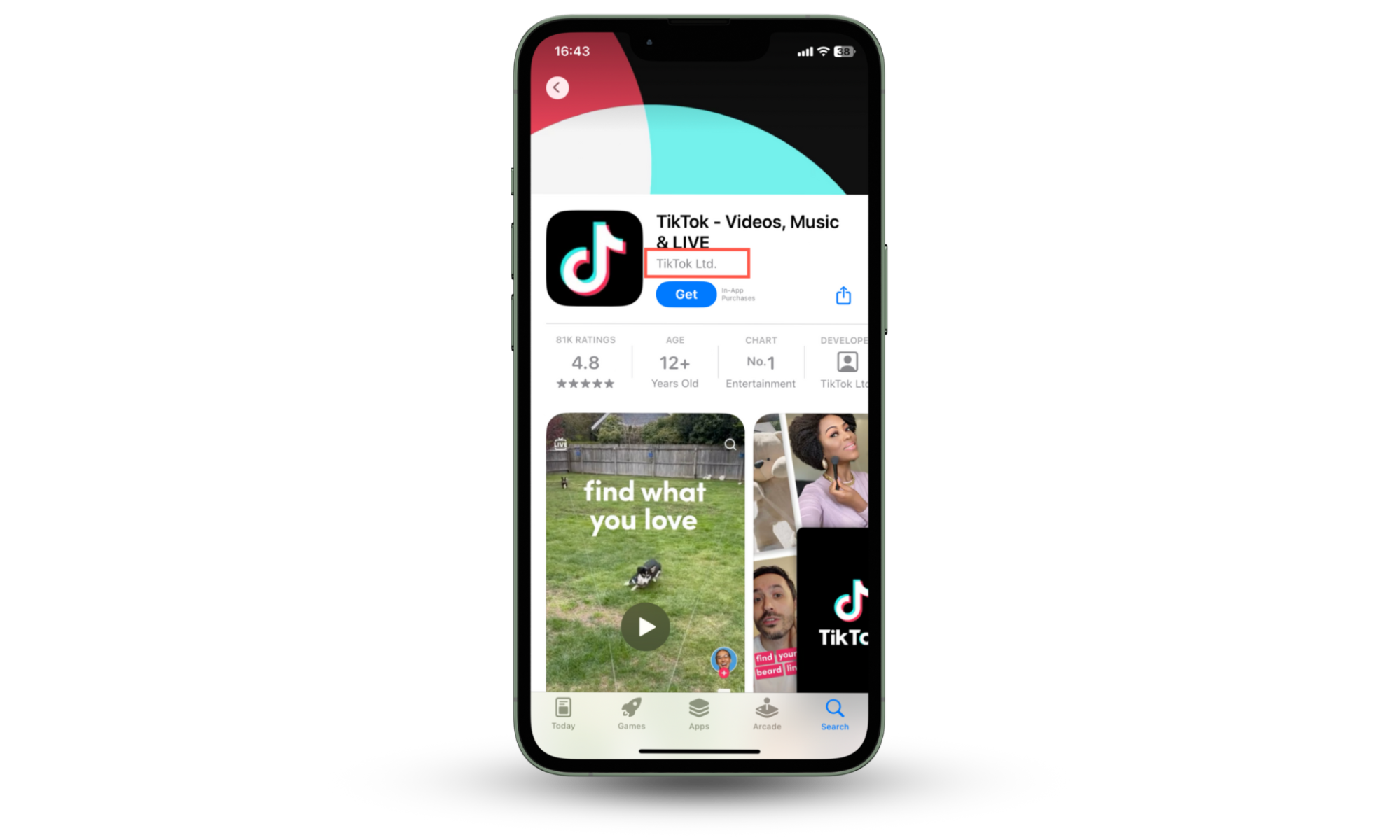
Read reviews and ratings
Look at the app’s reviews and ratings—if they are mostly negative, stay away from it. Scammers can engineer fake social proof to deceive users, so you must also avoid newly released apps with high ratings and generic comments.
Here's how to check the reviews and ratings of an app on an iPhone or Android:
- Head over to the store page of an app on the App Store or Play Store.
- The rating should show up under the app's title and icon.
- Tap the rating to read user reviews.
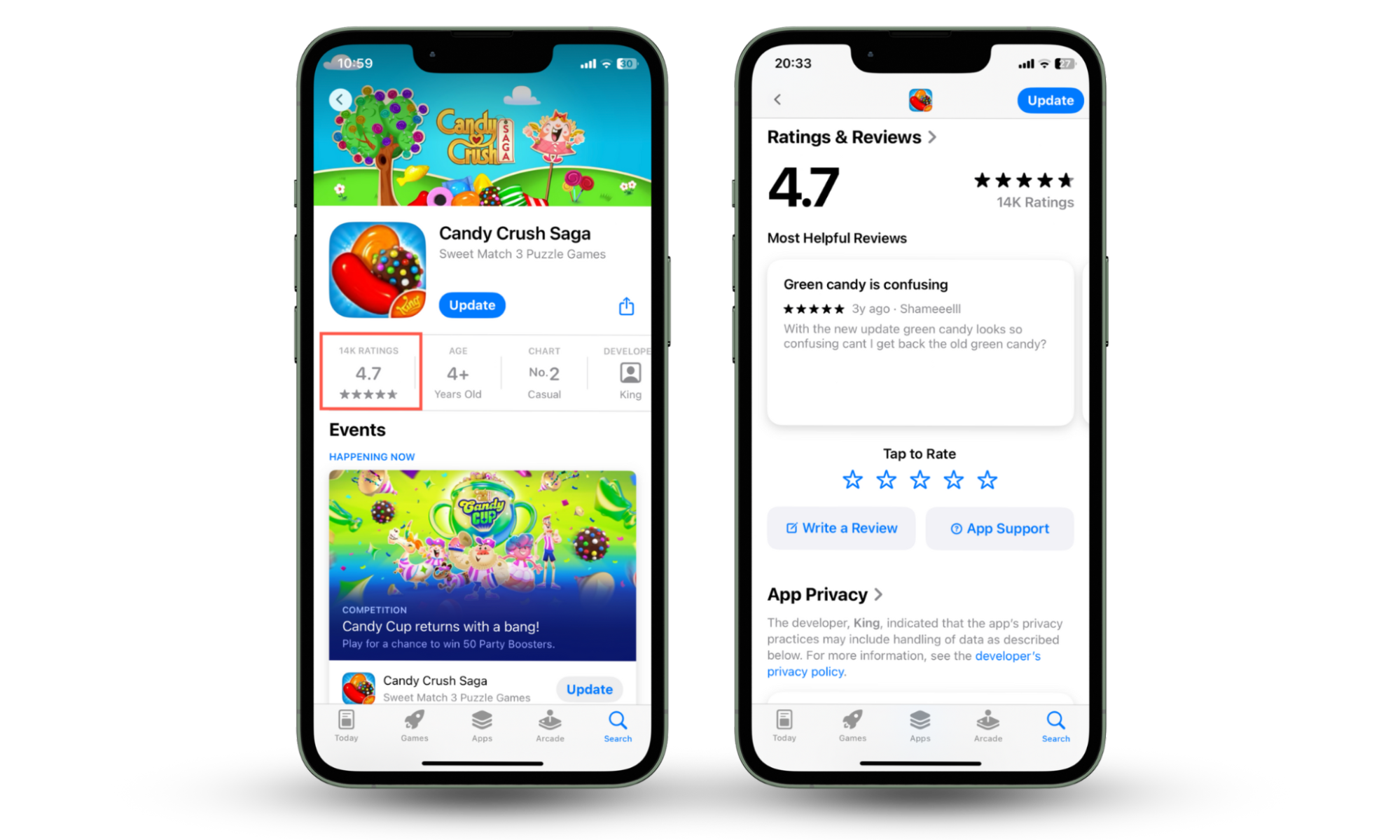
Search for the app on social media
If you have doubts, it’s always a good idea to vet an app on social media. Users who have had bad experiences share their experiences online. This is often the only way to check the authenticity of an app before sideloading it from an external source.
Analyze app permissions
Another way to check a scam app is to look at the permissions it would request. Be cautious of apps asking for more permissions than what they need to function. For example, a flashlight app shouldn't need access to your contacts or location.
Here's how to check what permissions an app requires on an iPhone or Android:
- Open the App Store or Play Store and head over to the store page of an app.
- Scroll down and tap App Privacy (iPhone) or Data safety (Android).
- You should see the permissions the app requires on the following page.
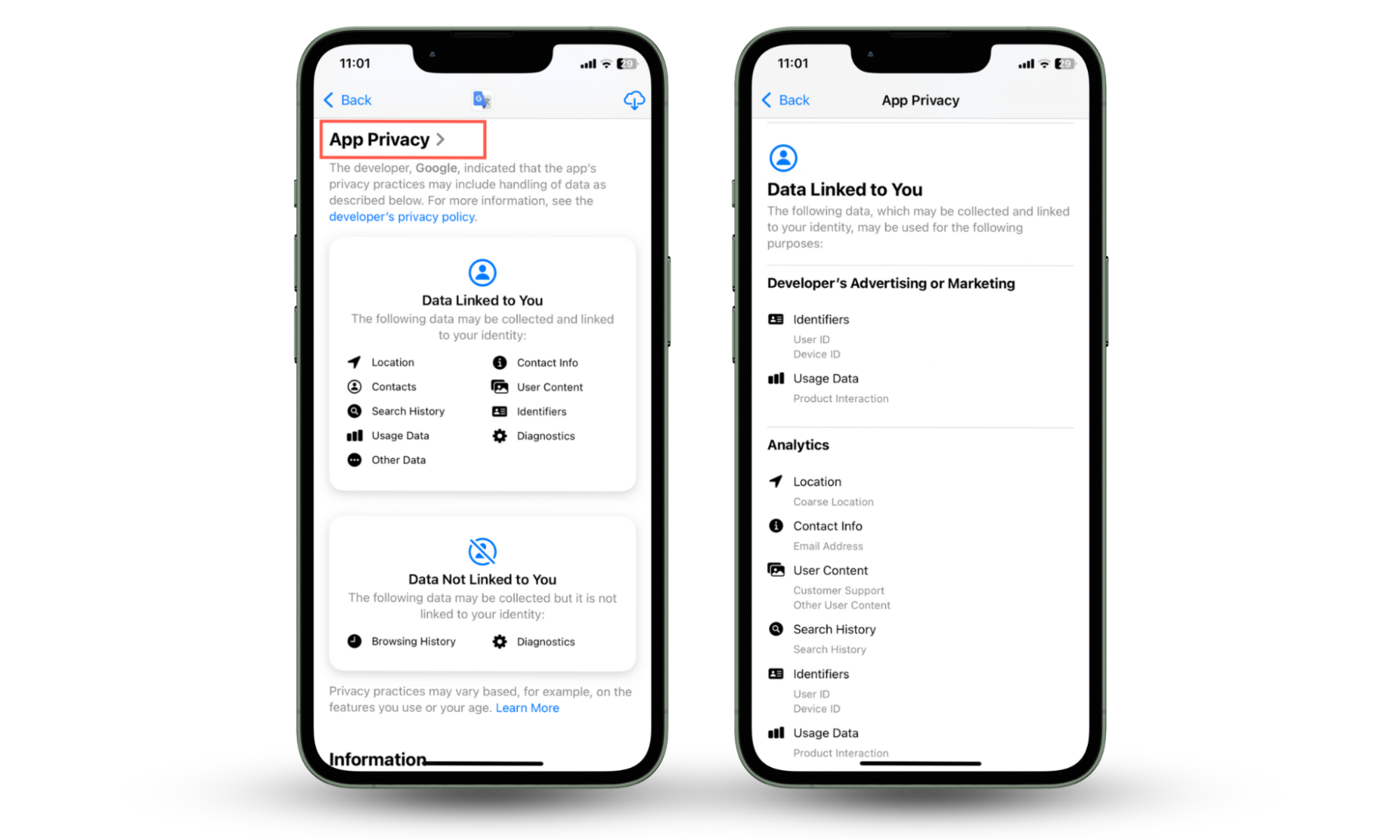
If you’ve already installed an app, you can check and manage its permissions by going to Settings > Apps > [App Name]. If you spot a suspicious app using location services, you may want to know if your phone is being tracked.
Check the version history
Legitimate apps receive regular improvements and security fixes through updates. Fraudulent apps usually don't, so consider that another clue. While you can't check an app's version history on the Play Store, you can do so on the App Store.
Here's how to check the update log for an app on the iPhone:
- Open the App Store and visit the store page of an app.
- Tap What's New.
- You should see the app's version history on the following page.
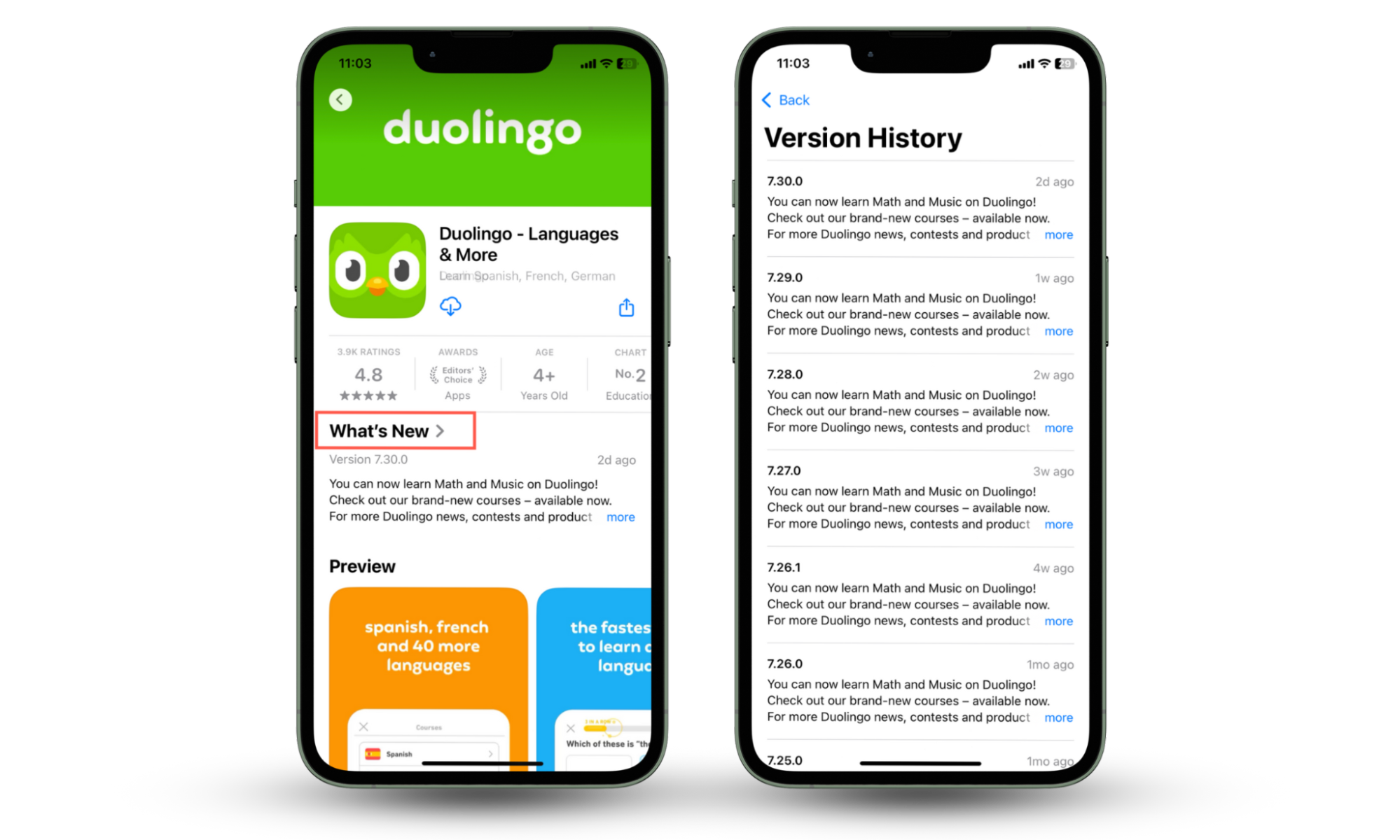
Use security software
A security utility like Clario Anti Spy can provide an extra layer of protection if you mess up during your research. They also safeguard you against apps that turn malicious if a developer pushes an update to trigger harmful behavior.
Note: Although fake apps exist on the App Store and Play Store, they are drastically fewer compared to alternative storefronts. Sticking to the official app stores also makes verifying apps easier. If you plan to sideload an app, vet it thoroughly and download it only from trustworthy sources.
How do you report scam apps
If you come across a fake app, it's best to alert the review teams at the App Store or the Play Store.
Report scam apps on iPhone
Apple allows you to report fake apps on its App Store, but only if the app is installed on your iPhone.
Here's how to report apps used by fraudsters on the iPhone:
- Open the App Store and navigate to the app's store page.
- Scroll down and tap Report a Problem.
- Sign in with your Apple ID.
- Open the pull-down menu next to What can we help you with? Then, select Report a scam or fraud.
- Tap Next and follow the on-screen instructions.
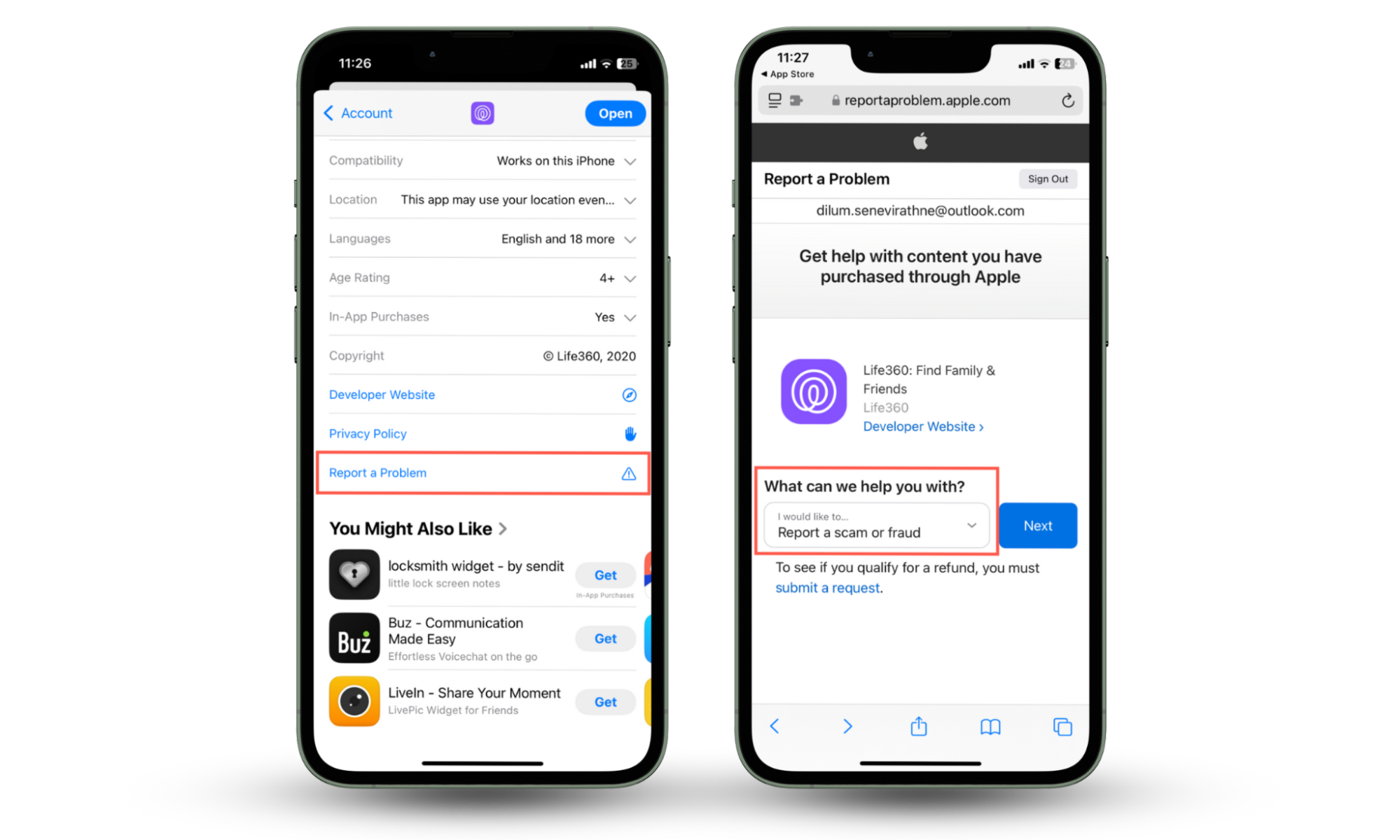
Report scam apps on Android
The Google Play Store allows you to report any app that you find suspicious.
Here's how to report apps used for scamming on an Android:
- Open the Play Store and navigate to the app's store page.
- Tap the More icon (three dots) at the top right of the screen and select Flag as inappropriate.
- Select the option labeled App feels suspicious.
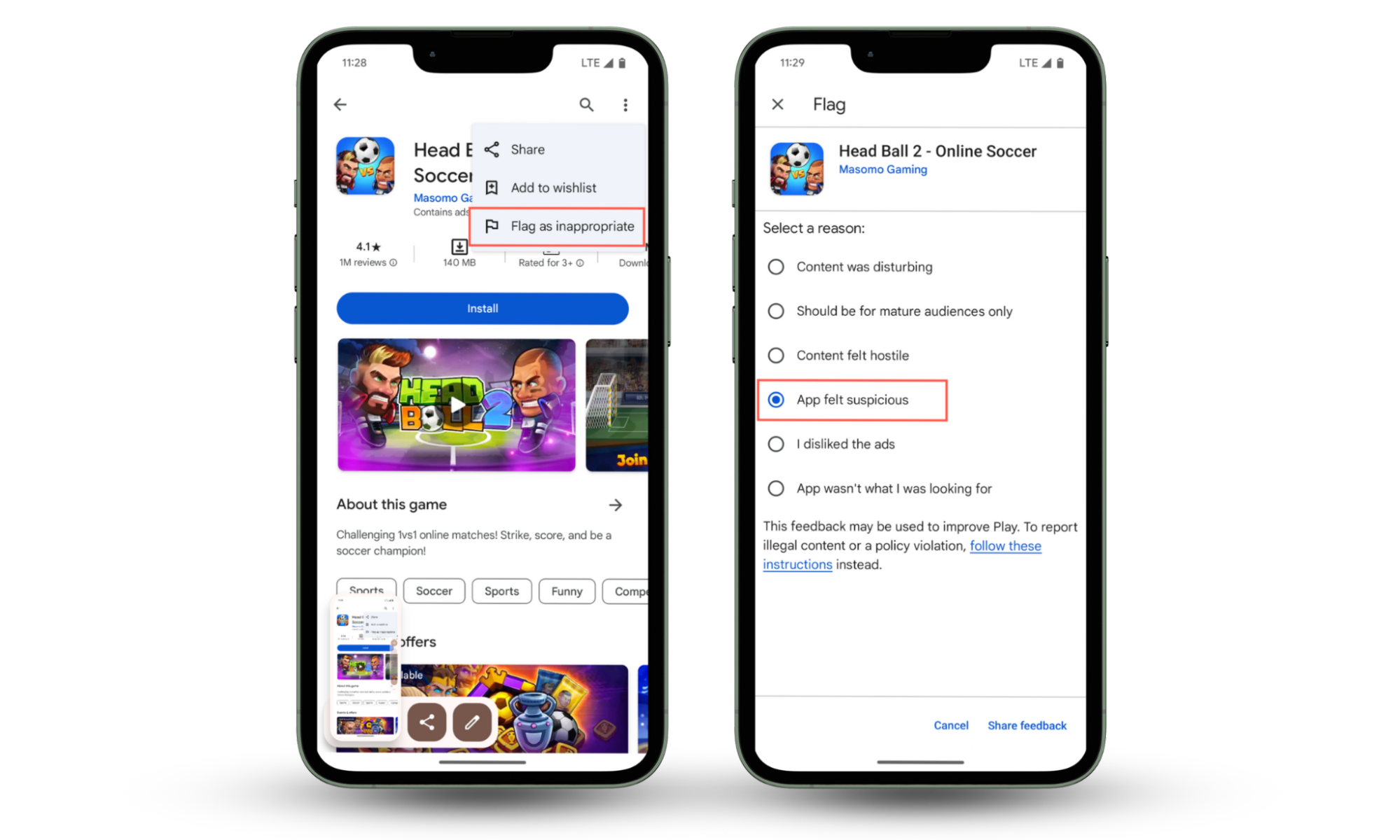
What else can you do?
Besides reporting a fake app, here are several other things you can do:
- Request a Refund: If the app scams you into making a purchase, visit the Report a Problem page (iPhone) or the Request your Google Play refund page (Android) to submit a refund request.
- Contact Your Bank: If the app tricks you into sharing financial information, immediately call your bank or credit card issuer and report the incident. Read more about what to do if you get scammed.
- Report to the Developer: Notify the developer if you encounter a blatant ripoff of their app. Doing that increases the chances of having the app taken down quickly. You can find the developer's contact information on their app’s store page.
- Warn Others: Leave a negative rating or review for the app. Or, use social media to warn others about it.
Conclusion
Fake apps don’t always make headlines like other types of online scams, but the repercussions of falling victim can be devastating. Always pay attention to what you install, and regularly check for scam apps on your phone. Clario Anti Spy can also go a long way toward protecting you against malicious software.


